Alfred Lancaster is the lesser known of the gunmaking Lancasters but all the examples of his guns that I have encountered have been of very high quality.
When a client arrived with an Alfred Lancaster hammer gun, missing its strikers and in a very poor external state, at first it looked hopeless. However, the gun's apparent quality shone through the dirt and water damage and we decided to have a go at restoring it to shootabiity and try to make it look the best it could be.
Serial No.3992 dates it to 1873/4, though Alfred Lancaster serial number records are sketchy. We know No.4050 was given as a prize in 1874, as it has a plaque on the butt to say so. The rib is engraved 'South Audley Street', which the firm vacated in 1886.
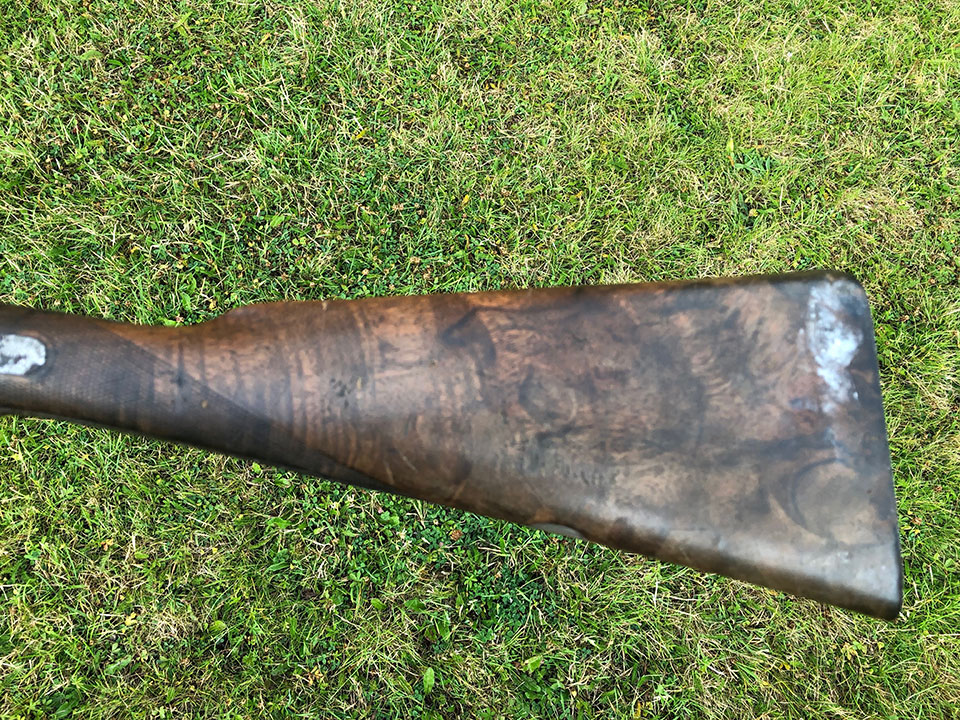
The stock had no finish at all left on it, it was matted, battered and tired but the chequer had not been re-cut, nor was it badly worn. The figure in the wood was easy to see even with no finish. I was confident this would respond to treatment. However, before deciding on a course of action, we had to find out if the barrels would respond to cleaning up and leave us with a viable pair of pipes, down which we could confidently launch powder and shot.
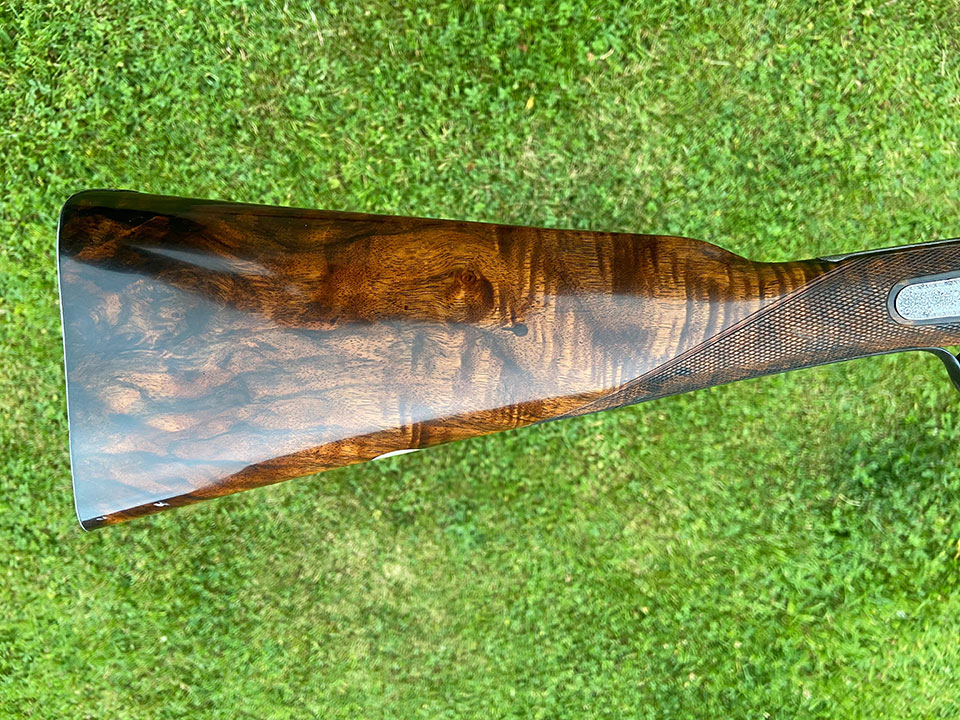
The gun had been a wall hanger, hence the missing strikers - a ham-fisted passing off for de-activation wich may have passed muster fifty years ago but no longer made any difference to the Section Two shotgun status the Lancaster has in law today. It looked like it had been submerged in water and left to dry, such was the extent of the wear on the finish and the rust patches on the exposed metal work.
However, internally, it was remarkably clean, dry and unaffected by decades of neglect. It is of game gun configuration with rebounding back locks, a Jones under-lever and screw grip action. The thirty inch damascus barrels were sent off for honing, striking up, polishing and re-broning to see if they would become passable.
Fortunately, they did so, retaining sufficient wall thickness to inspire confidence and extrenally looking acceptable, though some pits would not clean out.
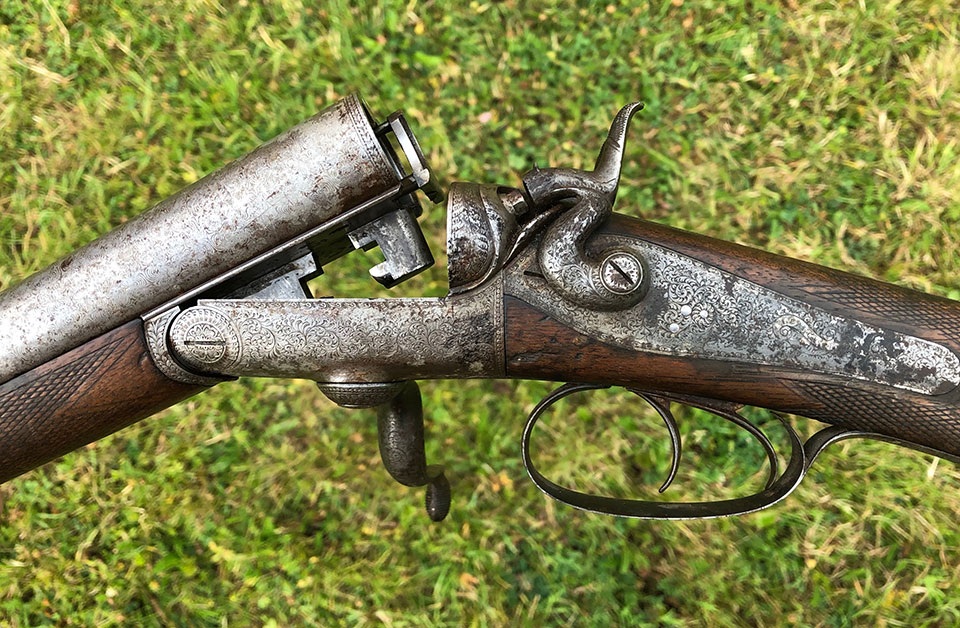
With new strikers made and the woodwork and metal work cleand up as best as possible, it can be seen that the Lancaster is a quality gun. certainly, it has suffered over the decades but I'm delighted that today it can once again face a driven pheasant or walked-up grouse with a cartridge in the breech and a hope in the heart of the sportsman that it will again bring birds to bag.
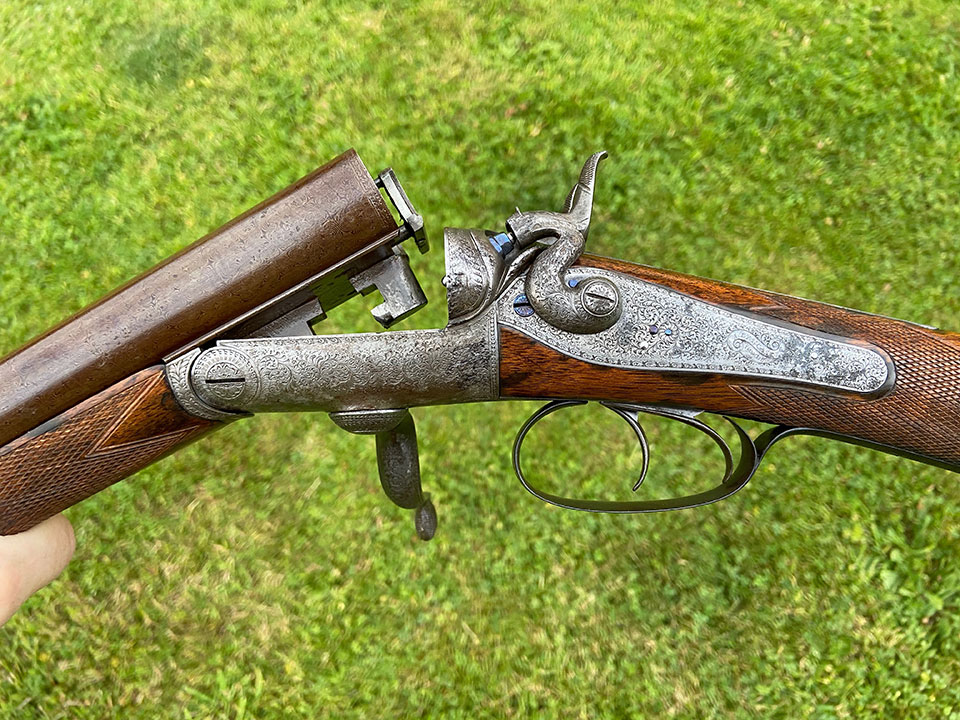
One or two stubborn rust spots, now cured, attest to the gun's history but the cleaning and servicing of all the metal parts and mechanisms has allowed the top class build quality to emerge once again. I don't think the gun had been shot a great deal before it was consigned to the status of ornament. We did not need to re-joint it, the barrels were tight on the action and the mechanisms all well alligned and functionally perfect. Since it was bought for a tiny pittance, the modest restoration cost was worthwhile.
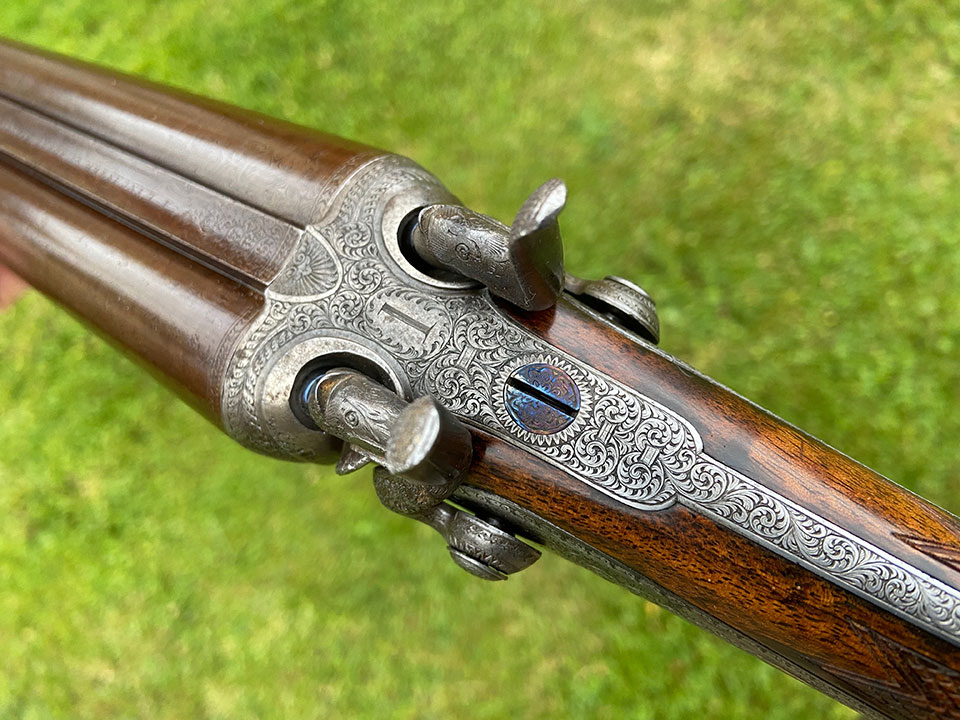
These before and after photographs serve to show what can be achieved even with guns which look like time might have killed off. I hope to see those elegant dolphin hammers launching an ounce of No6. in teh direction of a pheasant this season coming.
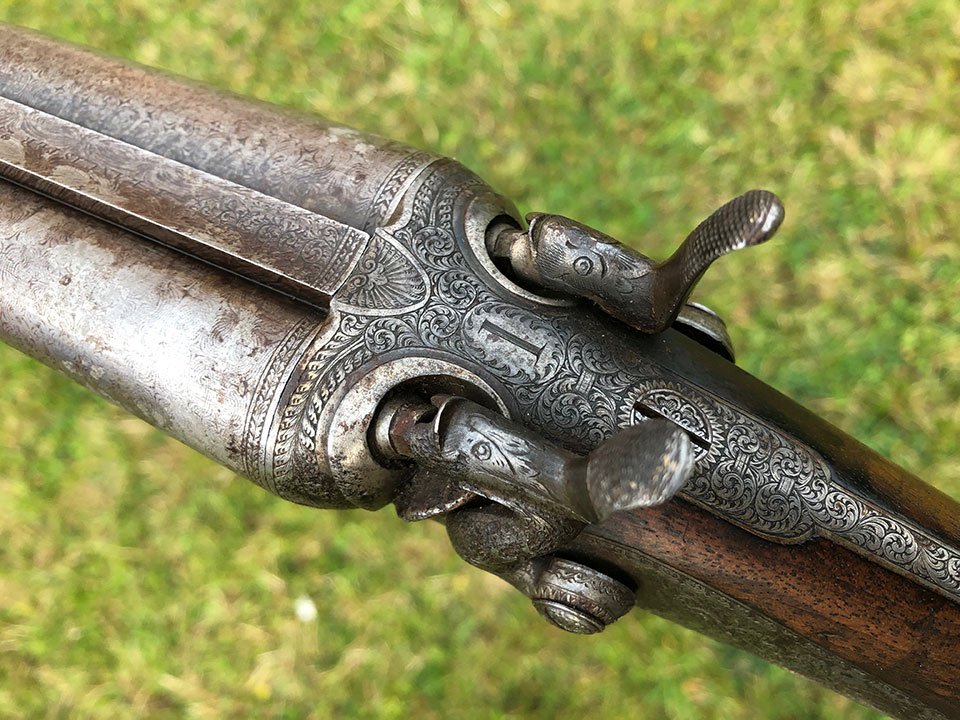
Published by Vintage Guns Ltd on



